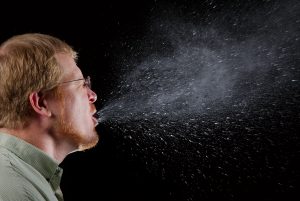Quick post – just saw this Tweet from the Airmid Healthgroup Your home’s odor may be making you sick; microbial volatile organic compounds http://t.co/8M7U84L5Oi via @USATODAY – Airmid Healthgroup (@AirmidHealth) May 13, 2014 //platform.twitter.com/widgets.js It points to a story in USA Today by Melissa Pandika that may be of interest – Your home’s odor may be …
Most of us spend most of our time indoors amidst suspended biological particles — spores, pollen, bits of dead skin, bacteria, viruses, and so on. We care about these particles because they may have human health impacts (positive or negative), effects on building materials, and possible forensic uses. Two sources known to be important for …
After 1.5 years of collection events, culturing, identification, and selection of candidates our space microbes experiment finally is in orbit. Our 48 microbes, collected from a variety of built environments on earth, are now whipping around the planet. The rocket took off from Kennedy Space Center at Cape Canaveral at 3:25pm EST yesterday. In a …
Animal shelters provide an essential and beneficial social service, caring for an estimated 9 million pets each year in the United States. Many animals entering a shelter are highly stressed and lack the benefits of standard veterinary care, including vaccinations. Moreover animal shelters are an intensive housing situation that amplifies the transmission of infectious diseases …
Yesterday was to have been the day that our collection of 48 microbes, collected from built environments around the country, were to blast off into space and try growing in microgravity. This would be followed by swabbing of the space station performed by the astronauts. We plan to analyze these swabs using bacterial, archaeal, and …
Well this is interesting. Holly Bik pointed me to the fact that the Clinton Global Initiative has a track on the Built Environment:About Us: The Built Environment | Clinton Global Initiative. Not sure exactly what they do in this track but seems like a good way to get exposure for the field of microbiology of …
In November, 2012, Curtis Huttenhower began work (with funding from the Sloan Foundation) to examine the transmission of human-associated microbes by public transportation surfaces. An article on “Big Data” in the current issue of Harvard Magazine includes a description of Huttenhower’s work in the lead article “Why “Big Data” Is a Big Deal.” After very …
From the start, Project MERCCURI has involved classrooms and students in the process of citizen science. Many of our samples were collected by students and the microbes going into space from JPL were voted on by a number of high-school classrooms. Now we have a “Project MERCCURI Educator’s Guide” which contains a detailed overview of …
Not actually Danish chickens. (cc-by-nc river seal)One of the most coveted chores at my high school was to feed our school’s chickens. The chickens provided eggs for the students, faculty, staff and our extensive Meals on Wheels program. I always thought it was the best chore assignment you could ask for; the hen house had …
OK – definitely want this book.


